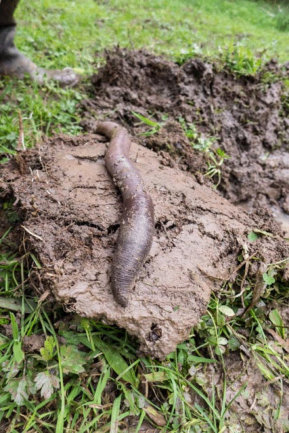

work with landowners to ensure that habitats of Giant Gippsland Earthworm and burrowing crayfish are protected on rural properties.investigate the potential of eDNA to assist in identifying different species of burrowing crayfish in the field and.It builds on an earlier Federal Government project “ Building Capability To Manage GGE Habitat On Farms ”.

Victorian Government’s Biodiversity Response Planning Project (BRP) In 2018, a partnership project between DELWP Gippsland, Federation University, Gippsland Water, Latrobe Catchment Landcare Network, and South Gippsland Landcare Network was awarded a Grant under the State Government’s Biodiversity Response Planning Project (BRP) to promote the conservation of four species of threatened invertebrates found in the western end of the Strzelecki Ranges. Working together and managing farms in ways that protect GGE habitat will help ensure that GGEs continue to survive and thrive. This is imperative for threatened species such as the Giant Gippsland Earthworm, where the farmers of South and West Gippsland are the custodians of the majority of its habitat. Measuring about one foot long at the time of hatching, the baby earthworm is already huge, but it has a very slow growth rate for the rest of its life, which some scientists say suggests that it can live for up to 10 years, maybe even more.Farmers As Custodians It’s not just national parks and nature reserves that are important for protecting our threatened plants and animals farmland also plays a role in biodiversity conservation. Giant Gippsland earthworms will only produce one egg per year, from which a single individual will emerge, after a period of 12 months. Some scientists theorize that the worms can lengthen their bodies, thus becoming slim enough for two of them to fit in the burrows alongside each other, but no one really knows for sure how it happens.

No one really knows how giant Gippsland earthworms copulate, as surfacing seems unlikely due to the threat of predators, and their underground burrows are barely wide enough for one specimen to pass through at a time. The toxins used in agriculture, and its vulnerability to physical injuries due to its sheer size haven’t helped things, and neither has the species’ mating habits. Although the giant earthworms to adapt and survive in their endemic home despite it having changed drastically in the last two centuries is amazing, human activity has put the species on the endangered list.


 0 kommentar(er)
0 kommentar(er)
